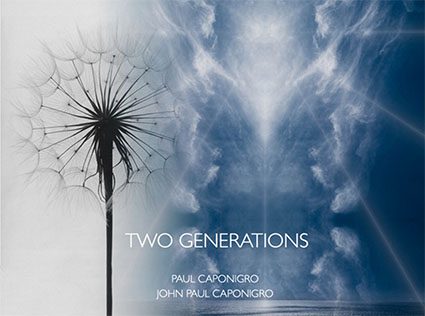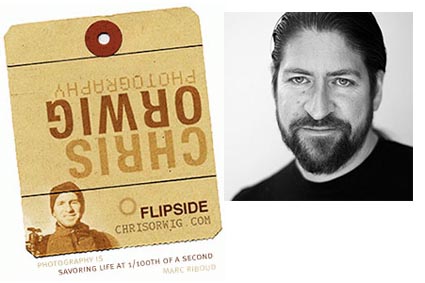3 Ways To Enjoy Antarctica
Now there are three ways to enjoy my images of Antarctica.
Listen to my online Viewing Rooms.
Enjoy my videos.
Read my ebooks.
.
Find out about new images with my newsletter Collectors Alert.
Now there are three ways to enjoy my images of Antarctica.
Listen to my online Viewing Rooms.
Enjoy my videos.
Read my ebooks.
.
Find out about new images with my newsletter Collectors Alert.

“B&H’s OPTIC 2016 Imaging Conference provided numerous opportunities to talk with some of the most respected nature and landscape photographers working today, but the highlights of our two days at OPTIC had to be our chat with Michael Kenna, the event’s keynote presenter, and our conversation with Paul and John Paul Caponigro. It is unnecessary to summarize the work of these three photographers in any quick description but, suffice it to say, each is a master of his craft.
While their work is distinctive and unique, it was wonderful to hear of their common vision, approach—and yes, spirituality—and for this reason, we present their conversations together. With Kenna we spoke of process, why he sticks with medium format film photography and what motivates and inspires his work. With the Caponigros, we touched upon the spirit of art, how to communicate with nature and, with Father’s Day in mind, how to let a child discover his or her own path to artistic expression. Join us for these two inspirational conversations.” – John Harris and Alan Weitz
Michael Kenna (1:30 – 30:05)
Paul and John Paul Caponigro (31:00-57:10)
Listen to it here.
View our lecture at B&H’s OPTIC 2016 Conference here.
Read our conversation here.
View the ebook Two Generations here.
View the Two Generations exhibit catalog here.

SCAMPER
Having trouble coming up with new ideas? Get thousands of ideas with one word. Try SCAMPER. In 1939 advertising executive Alex Osborn, “the father of brainstorming”, first proposed a set of nine strategies for creative thinking, seven of which were later rearranged by Bob Eberle into the mnemonic SCAMPER.
S Substitute
C Combine
A Adapt
M Modify
P Put to Other Uses
E Eliminate
R Rearrange
What are the other two missing words?
Minify, which I like to think of as expand and contract or put another way reduce and enlarge.
Reverse, which I think is the most powerful tool of all. It’s typified by the 180 degree rule. Do the opposite.
The underlying assumption with SCAMPER is that new ideas are based on old ones. This may not always be the case, but often it is. To use SCAMPER, you have to start with something.
You can use SCAMPER as a list of questions that can be used to generate new ideas. Simply ask, “Can I ____ something?” inserting the words SCAMPER represents one at a time. Next, you might try using two words at a time. Later try three. Classically, the best solutions are the simplest, but not always.
Find over 20 creativity tips here.
Learn more in my workshops.

Identify and Isolate the Variables
In any situation, it helps to know what elements you’re dealing with and what each of those elements contributes to the mix. With that information you can get results you desire more predictably and exert more precise control over the process. This idea is routinely applied in scientific fields where the benefits are clear for all to see. Not solely applicable to areas that are highly technical, it is equally applicable in any creative endeavor. Being analytical is one mode (to be listed among others) of creativity. The art is in knowing when to apply it, not being limited to using it exclusively or avoiding it altogether.
Find more Creativity resources here.
Stimulate your creativity in my workshops.

Look at Things from Many Perspectives
One of the hallmarks of creativity is the ability to look at things from many perspectives, both conventional and unconventional. Often taking a different tack when engaging a problem reveals dimensions, relationships, insights, and solutions that might otherwise remain hidden. If you’re looking for something new, in order to find it, you have to look in new ways. Spend a little time exploring your options so you can be sure you devote yourself to the best approach available.
Find more Creativity resources here.
Stimulate your creativity in my workshops.

Put It In Writing
Writing helps clarify thought. Find the words to describe your images and you’ll not only be able to make your work clearer to others, you’ll understand it better yourself. Use one word, one phrase, one sentence, one paragraph, and one page. This sounds simpler than it is. Take the time you need to find the right words. The next time you find yourself called upon to describe your work, you’ll have the words to do so at the tip of your tongue.
Find more Creativity resources here.
Stimulate your creativity in my workshops.

Identify the Core
“If you had to eliminate all of your images save one, which one image would you keep?” This is a question I frequently ask my students and myself. It’s not something I recommend you actually do, but answering the question, hard as it is, is always very revealing. Identifying one image that most embodies your vision helps clarify your visual identity. List the strengths of this image. It’s likely these strengths will be present in a majority of your work. These core strengths often provide a foundation you can rely upon and develop further to make your work even stronger. These qualities can also be used to identify your particular passions and concerns. After you identify the image, ask yourself why you chose it. Did you choose an image because it fits other people’s criteria of success? Did you choose an image that has a particular relevance to your personal history? Did you choose an image that evokes a powerful emotion? Did you choose an image that symbolically represents something important to you? Strike up a dialog with your work. You’ll get to know your work and yourself even better.
Find more Creativity resources here.
Stimulate your creativity in my workshops.

Evaluating Success
Specify your standards for success to help you realize how far you’ve come and when you’ve arrived. Identify your standards before you begin projects. When you see your criteria, you may refine them, setting an even better course. With the clarity that comes from creating and organizing a list, you’ll be more likely to set an effective action plan to achieve each goal. New ideas will emerge!
Here are a few tips to setting standards for success.
1 – Keep it simple. You’ll understand your standards better and be able to share them with others more easily.
2 – Make it measurable. You’ll be able to make more objective evaluations during and after your efforts.
3 – Seek support. Collaborate with others who have additional skills. They’ll be able to help you accomplish specific tasks more successfully. They may also provide you with useful feedback.
4 – Celebrate success. Before moving on, enjoy the satisfaction of a job well done and reenergize, both with yourself and with others.
5 – Review and revise. Take time to evaluate your progress both during and after a project. Course correction is both the secret to getting there and to going farther.
Identifying your standards for success doesn’t keep you from exceeding them (quite the opposite), it will help you find useful perspectives and enjoy the successes you have achieved.
Find more Creativity resources here.
Stimulate your creativity in my workshops.

Take a Break
Stuck? Take a break!
When the solution to a problem eludes you … Go for coffee. Take a walk. Take a nap. Sleep on it. Sometimes, you may need to do this for many days in a row.
Often, taking a break works best after you’ve done the necessary preparation or research on a given problem. Get the known (what you know and what others know about a particular challenge) out on the table and into the light of the day. Finding the know will help you find the unknown. You’ll identify all the involved components and become more aware of what’s missing. But, the unknown usually won’t come to you when you are in an analytic state. It usually comes whey you are in a receptive state. Taking a break creates a space that you will fill naturally. Nature abhors a vacuum. Use this to your advantage.
Really let go. Get the problem completely off of your mind (which means out of your field of vision). If you find you can’t stop your mind, do something else with your full attention. You may be so fixated on a problem that to get your mind off it, you have to make yourself do something else that’s entertaining, exciting, or challenging.
You might think letting go is a sign of a lack of commitment or a form of quitting. It’s not. Many times it’s an absolutely necessity. It’s a way of taking a necessary rest. At some point, everyone and everything needs rest – even your mind.
Once you’ve had the experience of benefitting from letting go, doing it again will become easier for you.
Learn to be more creative.
Energize your creative life.

At the Palm Springs Photo Festival, Chris Orwig took a walk with me and we talked about a life in the arts. He’s been asking many other artists the same questions.
What inspires you?
What makes a photograph good?
What character qualities should the photographer nuture and develop?
Advice for the aspiring photographer?
Seriously consider answering the questions yourself.
Answering questions like this can energize and focus your creative life.
You can listen to my responses on his blog here.
Check out Chris’ work here.
Check out my workshop Illuminating Creativity.